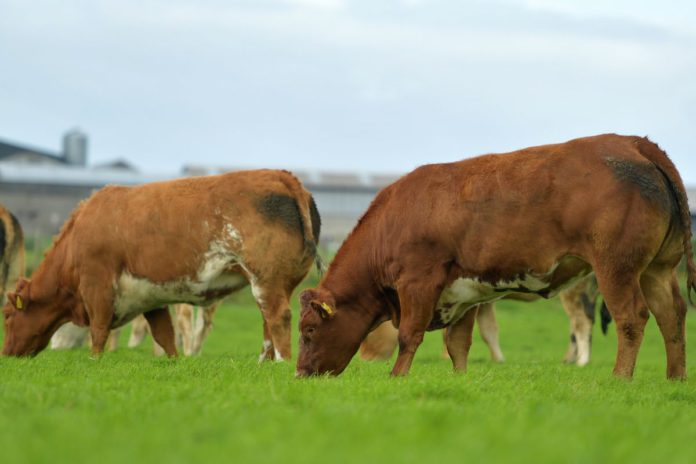In this article, Tommy Cox, education officer, Teagasc Ballinrobe, outlines key areas a farmer should consider when selecting replacement heifers.
According to Cox, a key aspect of successful suckler breeding is selecting and managing replacement heifers to ensure they make the successful transition into the herd for next year’s calving season.
An annual 15-20% replacement rate is recommended for suckler herds to maintain long-term herd productivity.
To improve your herd from year to year, there should be a good replacement policy in place, he advises farmers.
Sourcing and selecting replacement heifers
Replacement heifers represent the next generation of cows in a herd. Therefore, thorough selection is required to ensure they are going to be genetically superior to their predecessors.
He said farmers have two options when sourcing replacements:
- Either breed from within the herd;
- Source replacement stock from outside the farm.
Both options come with advantages and disadvantages.
“Breeding replacements from within the herd reduces the risk of bringing in disease by keeping the herd closed. It also has the added advantage that the farmer knows the breeding history of his replacements.”
“On the flip side, sourcing heifers from another farmer can make faster genetic progress in desired traits such as milk provided stock can be sourced from a reliable source.”
Selecting from within the herd
“When selecting from within the herd, the farmer knows exactly the breeding of the animal and can keep replacements from the top-performing cows in the herd.”
“Replacement heifers should be kept from cows that produce a quality calf with high weight gain to weaning, from cows that are fertile and have a tight calving interval, from cows that calve with little assistance and very importantly from docile cows that are quiet and easily handled.”
Sourcing outside the herd
On some farms where a farmer has used a terminal stock bull, the only option might be to source replacements from outside the herd.
“The ideal case scenario is where a relationship can be built up with a farmer with a good track record who is producing surplus replacement stock.”
“Visually correct animals with sound feet, good pelvic width, and reasonably good conformation with a well-formed udder are important physical aspects to look at when selecting heifers.”
“The ICBF Replacement Index is a useful tool to aid in selection with research data showing high replacement 4 and 5-star females outperforming lower index cows.”
“Try source genotyped heifers where parentage is verified, as it gives extra security on the breeding of the heifer, which helps reduce the risk of any inbreeding occurring.”
“When sourcing from outside the farm, increased biosecurity practices need to be put in place on-farm to prevent a potential disease outbreak.
Hitting 24-month calving targets
“Calving replacements at 24 months of age has being shown to be the most profitable age to calve down heifers. However, ICBF data shows that less than a quarter of heifers calve down at that age.”
“Calving at 24 months increases the lifetime output of the cow, allows for faster genetic progress in the herd, reduces the proportion of non-productive females, while also reducing the carbon footprint of the herd.”
Cox highlighted that good management and performance are important to ensure the following target weights are achieved:
- 60% of mature weight (approximately 400-420kg) at breeding;
- 80% mature weight at calving (approximately 600kg).
Sire selection
“A critical aspect for making 2-year-old calving work is sire selection. Farmers should use easy calving high reliable sires with calving difficulty figures no greater than 6.5% for beef heifers.”
“Heifers should be bred for an eight-week period, which allows each heifer to be served at least twice. After this, if there is an issue, they should be culled as they are likely to have future fertility issues.”
Pre and post-calving management
Once in-calf, ensure a high level of performance up to housing. At housing, pen heifers separately and maintain on good silage to continue growing.
Offer pre-calving mineral 6-8 weeks before calving. “Post-calving management is critically important to ensure resumption of oestrus and to get heifers back in calf. Ideally, heifers should grouped separately and offered preferential treatment.”
For more farming tips and advice, click here.





